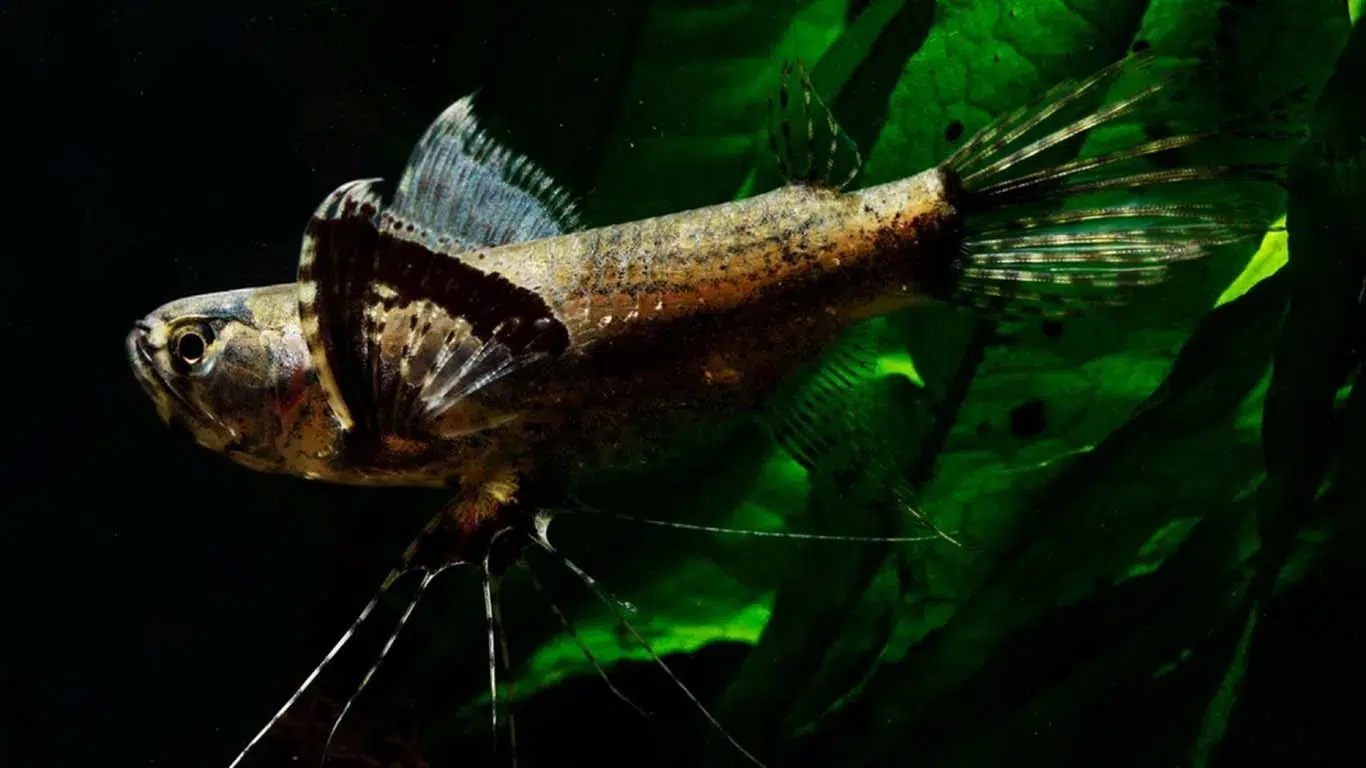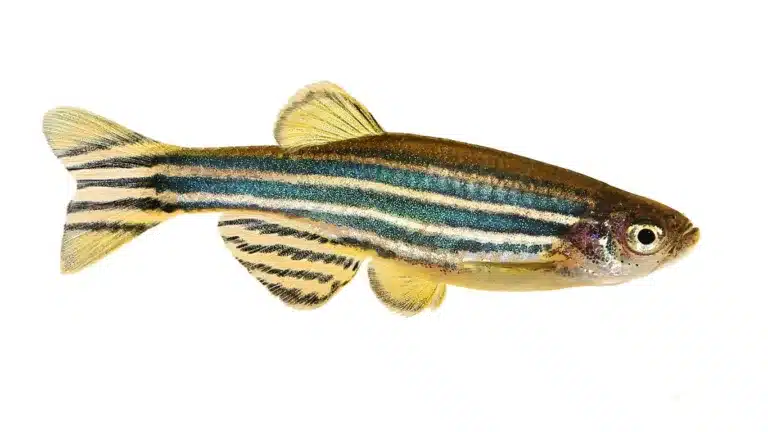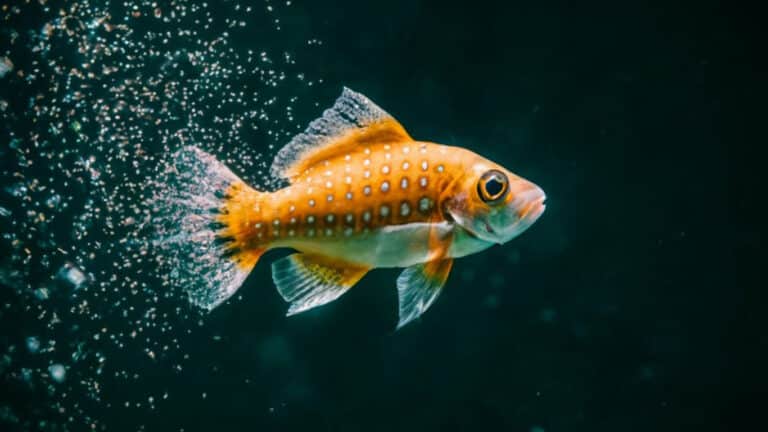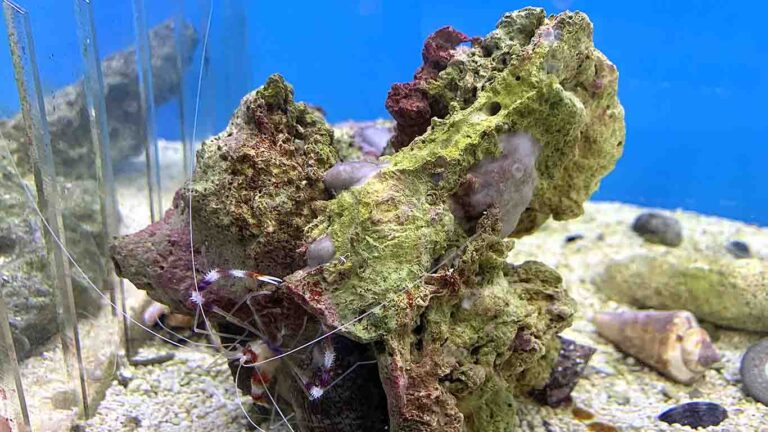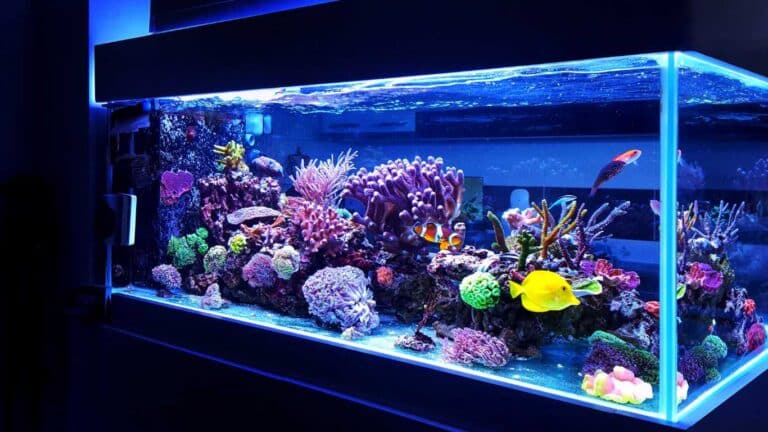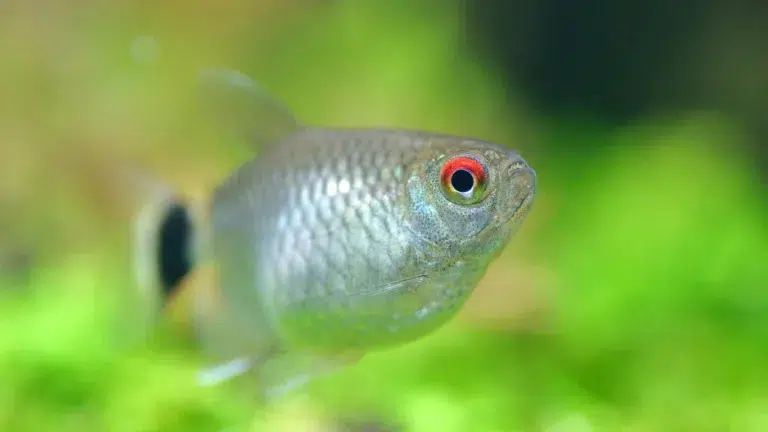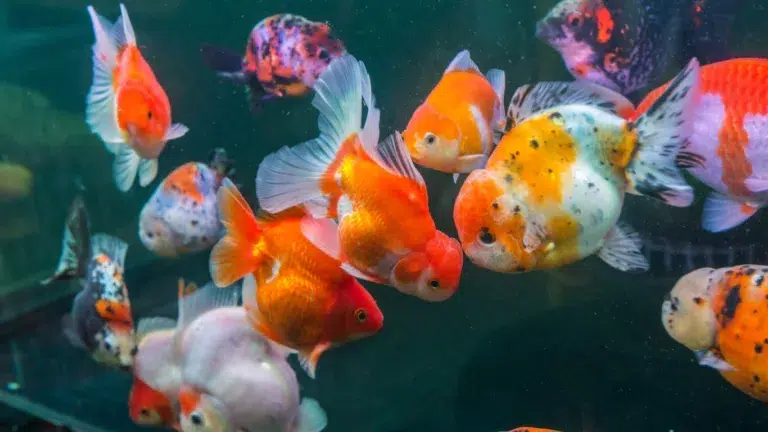The African Butterfly Fish, also known as Freshwater Butterfly Fish, is a captivating species that has gained popularity among aquarists. It is a unique and interesting fish with specific habitat requirements. In this guide, we will provide expert care tips and aquarium advice to help you keep your freshwater butterfly fish thriving.
Core Insights To Butterfly Fish Freshwater:
Species Summary
The African Butterfly Fish, scientifically known as Pantodon buchholzi, is a fascinating freshwater species native to West Africa. Unlike saltwater butterflyfishes, the freshwater butterfly fish has distinct differences in appearance. With its large pectoral fins, this fish possesses the remarkable ability to glide through the air, making it an efficient hunter and predator in its natural habitat. Its unique design has remained unchanged for millions of years, allowing it to adapt and survive in various aquatic environments.
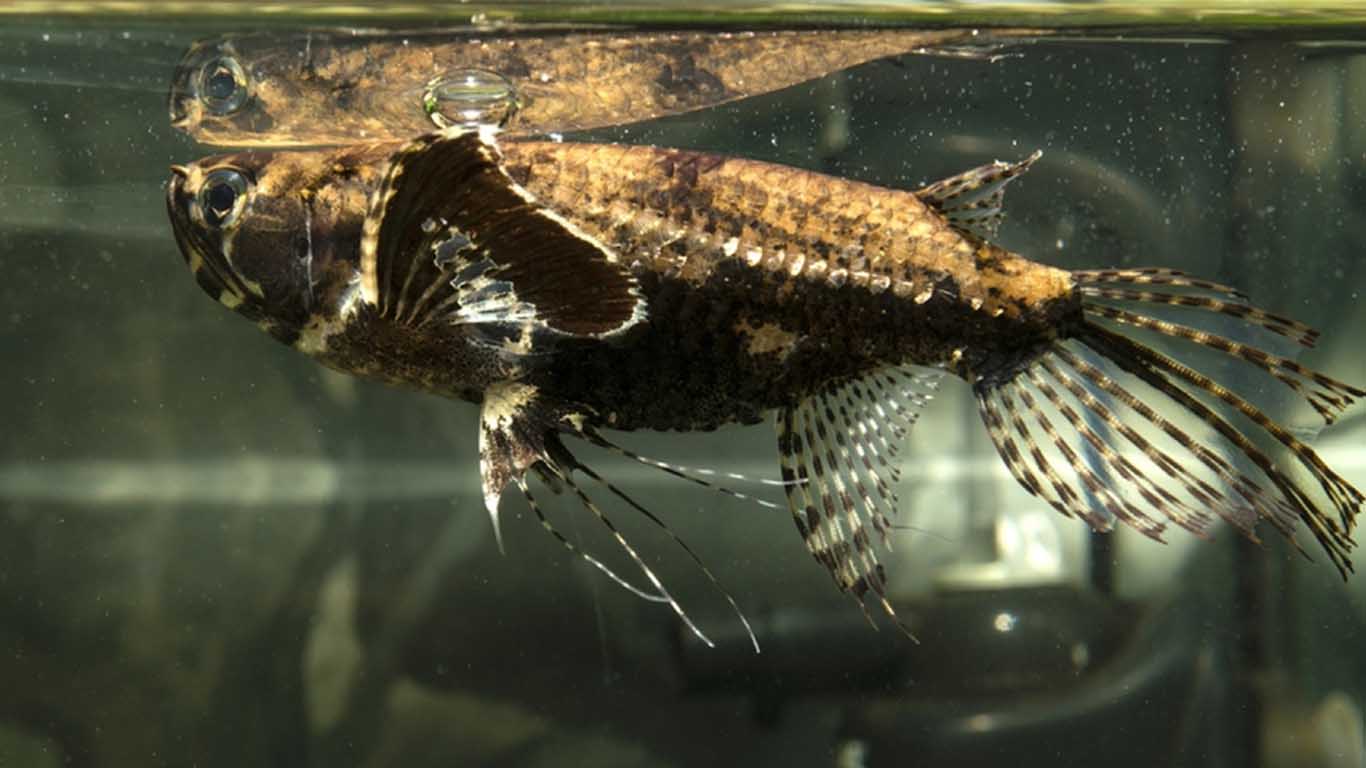
When it comes to freshwater fish species, the African Butterfly Fish stands out with its captivating beauty and intriguing behavior. Its appearance and distinct features make it a popular option for freshwater aquarium enthusiasts. The next sections will delve deeper into the lifespan, appearance, size, care, behavior, and breeding of this extraordinary creature.
Lifespan
The average lifespan of an African Butterfly Fish is around 5-6 years, but with proper care and a good diet, they can exceed this lifespan. Genetics and overall care play a significant role in determining the fish’s lifespan.
Taking care of your butterfly fish freshwater is essential for ensuring their longevity. By providing them with optimal living conditions and meeting their specific needs, you can help them thrive and potentially extend their lifespan. Additionally, offering a balanced and nutritious diet will contribute to their overall health and well-being.
| Breeding method | Average lifespan (years) |
|---|---|
| Captivity | 5-6 |
| Proper care and diet | Exceeds 6 |
Remember, your butterfly fish care efforts can greatly impact their lifespan. By providing a suitable environment, regular maintenance, and a well-balanced diet, you can help your African Butterfly Fish live a long and healthy life.
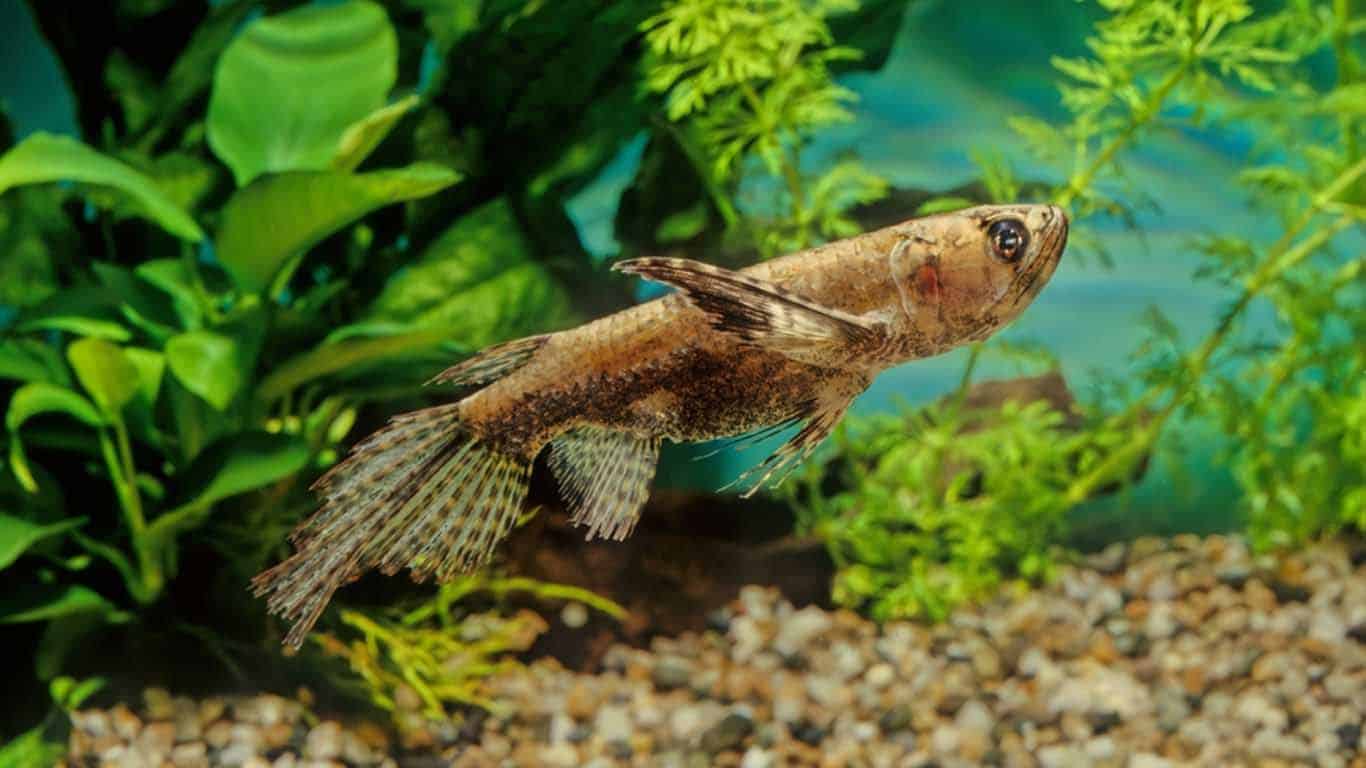
Appearance
The Freshwater Butterfly Fish has a unique appearance that sets it apart from other species. It has a flat, upward-facing body with eyes positioned on the top. Its large, fanlike pectoral fins resemble butterfly wings, and its other fins are translucent with darker lines. The body coloration is usually brown or gray, with small dots covering the lighter parts of the body.
The Freshwater Butterfly Fish’s distinctive features make it a captivating addition to any freshwater aquarium. Its flat, upward-facing body allows it to glide gracefully through the water, while its unique fin structure adds to its visual appeal. The coloration of the fish adds vibrancy and interest to the tank, making it a popular choice among aquarists seeking colorful freshwater fish.
Size
When it comes to the size of African Butterfly Fish, the average length is around 5 inches. However, it’s important to note that photos can sometimes make them appear larger than they actually are. Individual fish may exceed the average length by about an inch. The size of the fish is influenced by proper care and genetics.
| Size | Length |
|---|---|
| Minimum Size | 5 inches |
| Average Size | 5 inches |
| Maximum Size | 6 inches |
African Butterfly Fish Care
African Butterfly Fish care is crucial for their well-being. They have specific needs when it comes to their habitat and water conditions. The recommended minimum tank size for an African Butterfly Fish is 40 gallons. It is essential to provide them with a long tank instead of a tall one, as they spend most of their time near the surface. Maintaining stable water parameters, such as temperature (75°F to 86°F) and pH levels (6.5 to 7), is crucial for their health. They also require floating plants as cover and a calm water environment.
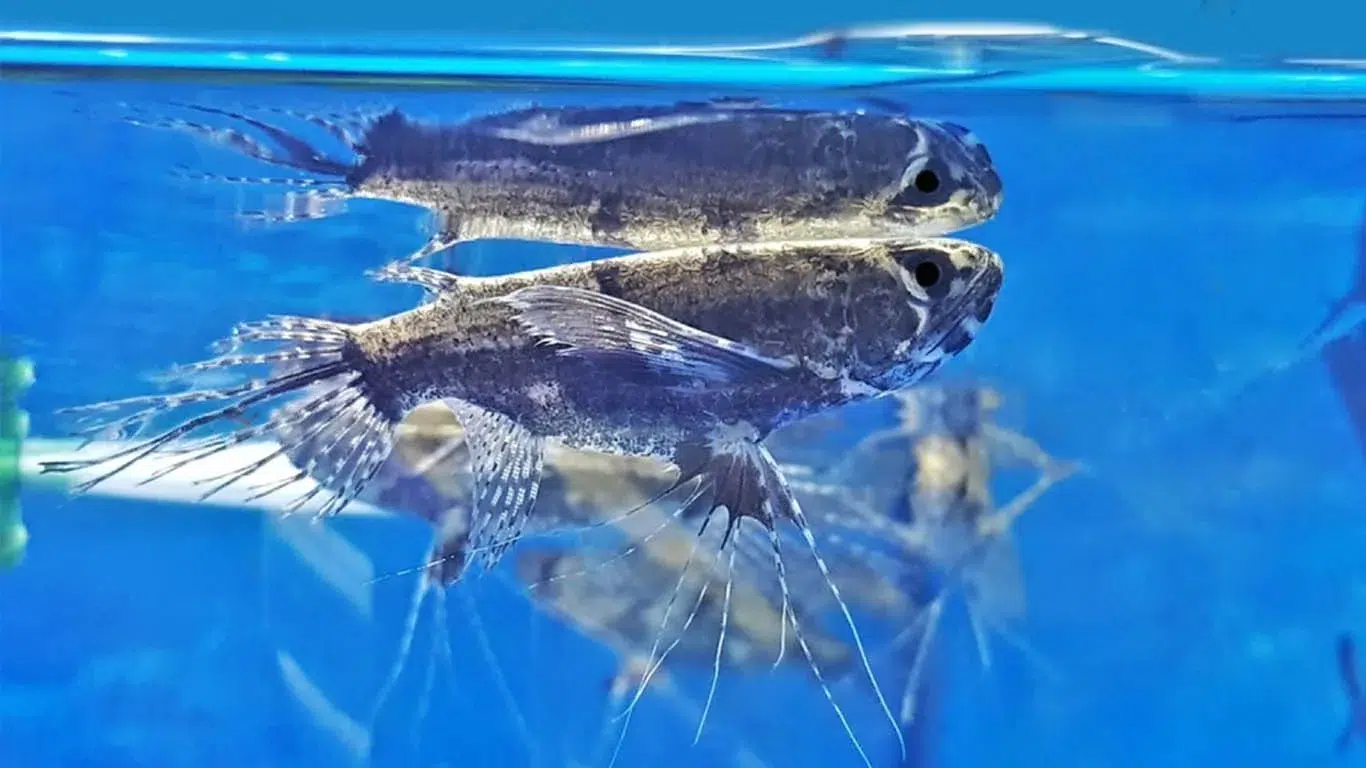
| Tank Size | Water Parameters | Additional Requirements |
|---|---|---|
| Minimum 40 gallons | Temperature: 75°F to 86°F pH: 6.5 to 7 | Floating plants as cover Calm water environment |
Providing a suitable habitat for your African Butterfly Fish is essential for their well-being and happiness. The recommended tank size of at least 40 gallons allows them enough space to swim and explore. It’s important to choose a long tank rather than a tall one, as these fish spend most of their time near the surface of the water, gliding gracefully and observing their surroundings.
Maintaining stable water parameters is crucial for the health of your freshwater butterfly fish. Keep the water temperature between 75°F and 86°F to mimic their natural environment. It’s equally important to maintain the pH level between 6.5 and 7, providing an optimal water condition for their overall well-being.
Furthermore to proper tank size and water parameters, your African Butterfly Fish also needs floating plants as cover. These plants not only provide shelter and protection but also create a natural and comfortable environment for the fish. A calm water environment with minimal water movement is preferred, as these fish are surface-dwellers and prefer still water.
By creating a suitable habitat with the right tank size, maintaining stable water parameters, and incorporating floating plants, you can ensure the well-being and happiness of your African Butterfly Fish.
Tank Mates
African Butterfly Fish are generally good community fish, but they can be intolerant of other surface-swimming fish and may nip at their fins. To ensure a peaceful and harmonious aquarium environment, it is best to keep them with other fish that primarily inhabit the middle and bottom regions of the tank. Fish that are smaller in size may be seen as prey and should be avoided as tankmates.
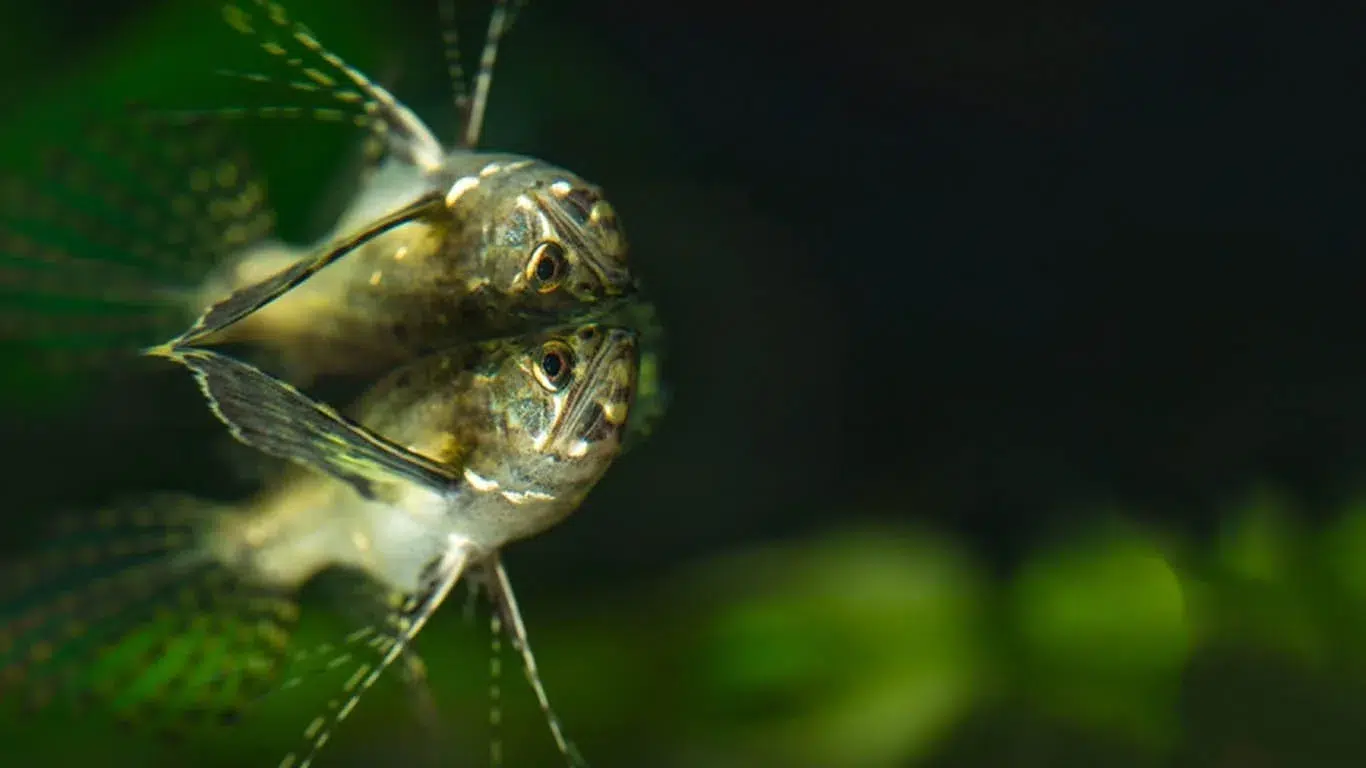
When choosing tank mates for your freshwater butterfly fish, consider species such as:
- Tetras
- Gouramis
- Barbs
- Rasboras
- Corydoras Catfish
These types of fish are compatible with African Butterfly Fish and offer a diverse and visually appealing tank setup.
Diet & Feeding Recommendations
Proper nutrition is vital for the health and well-being of your freshwater butterfly fish. As natural predators, they require a diet rich in meaty live foods to thrive. Flakes or pellets alone won’t suffice. Here are some recommended feeding practices for your butterfly fish care:
1. Meaty Live Foods
Crickets, other insects, and feeder fish are excellent choices to fulfill your butterfly fish’s natural dietary requirements. These options provide essential nutrients and encourage their hunting instincts. Live foods mimic their natural food sources, enhancing their overall health.
2. Feed 2-4 Times a Day
To mimic their natural eating patterns, it is recommended to feed your freshwater butterfly fish 2-4 times daily. Regular feeding sessions ensure they receive a consistent supply of energy and maintain optimal health. Observe their feeding behavior and adjust the frequency accordingly.
Always provide only the amount of food that your fish can consume within a few minutes to avoid overfeeding and water pollution.
Remember, a balanced and varied diet will promote the best physical condition and vibrancy in your freshwater butterfly fish. Maintain a regular feeding schedule and observe their feeding behavior to ensure they are consuming an adequate amount of food.
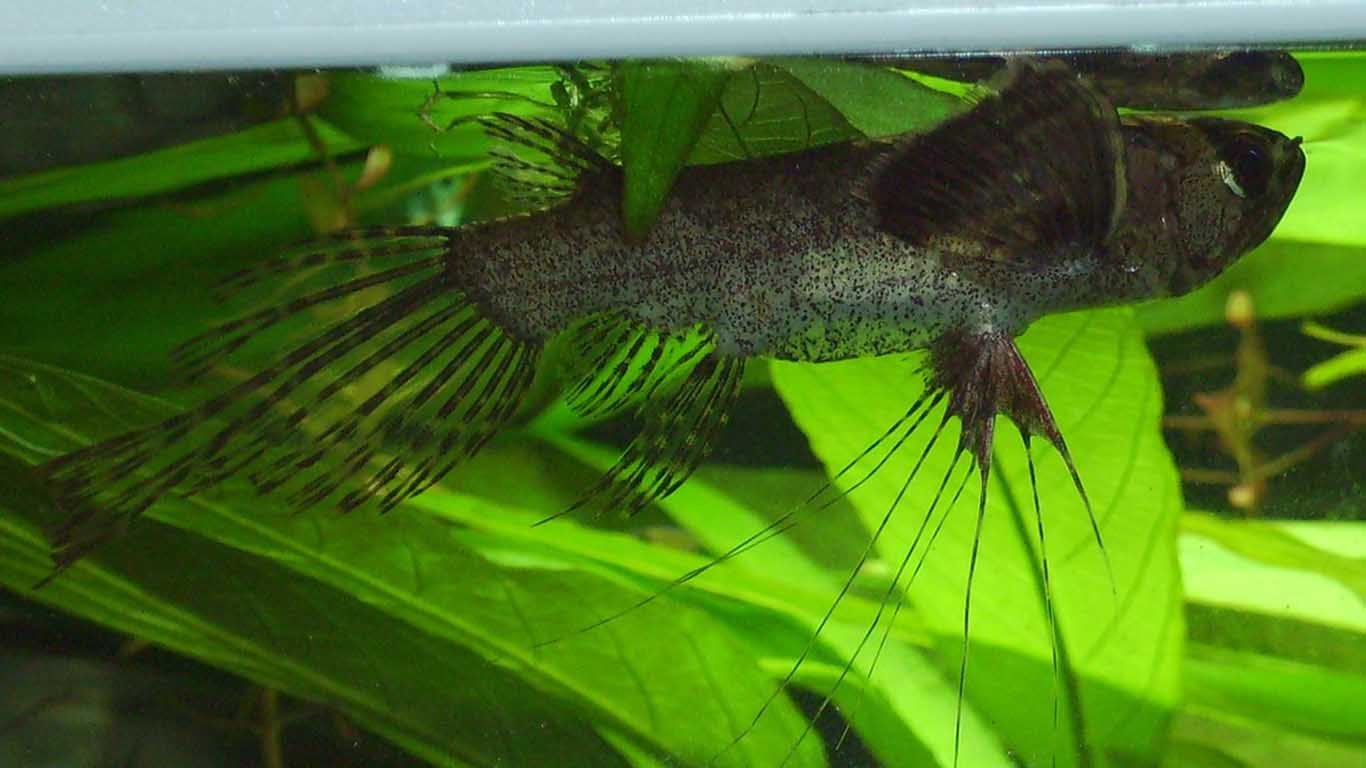
Behavior & Temperament
African Butterfly Fish are fascinating creatures with distinct behavior patterns and temperaments. Understanding their natural tendencies is crucial for providing optimal care in your freshwater aquarium.
Surface-Dwelling Predators
These fish are primarily sedentary and tend to spend most of their time near the water’s surface. They have a unique hunting strategy where they float near the surface without much movement, waiting for unsuspecting prey to approach. This behavior allows them to easily capture insects and other small creatures that come within their reach.
During feeding time or when they sense prey nearby, African Butterfly Fish become highly active. They swiftly dart towards their target and quickly devour it with their specialized mouths.
Territorial Nature
While generally peaceful, these fish can exhibit territorial behavior towards other fish that encroach upon their designated space. It is important to consider this aspect when selecting tank mates for your African Butterfly Fish.
To maintain harmony in your aquarium, it is recommended to keep them with species that primarily inhabit the middle and bottom regions of the tank. This minimizes the chances of territorial disputes and potential fin-nipping.
If you observe any signs of aggression, provide ample hiding spots and create visual barriers using plants and decorations to establish separate territories within the tank.
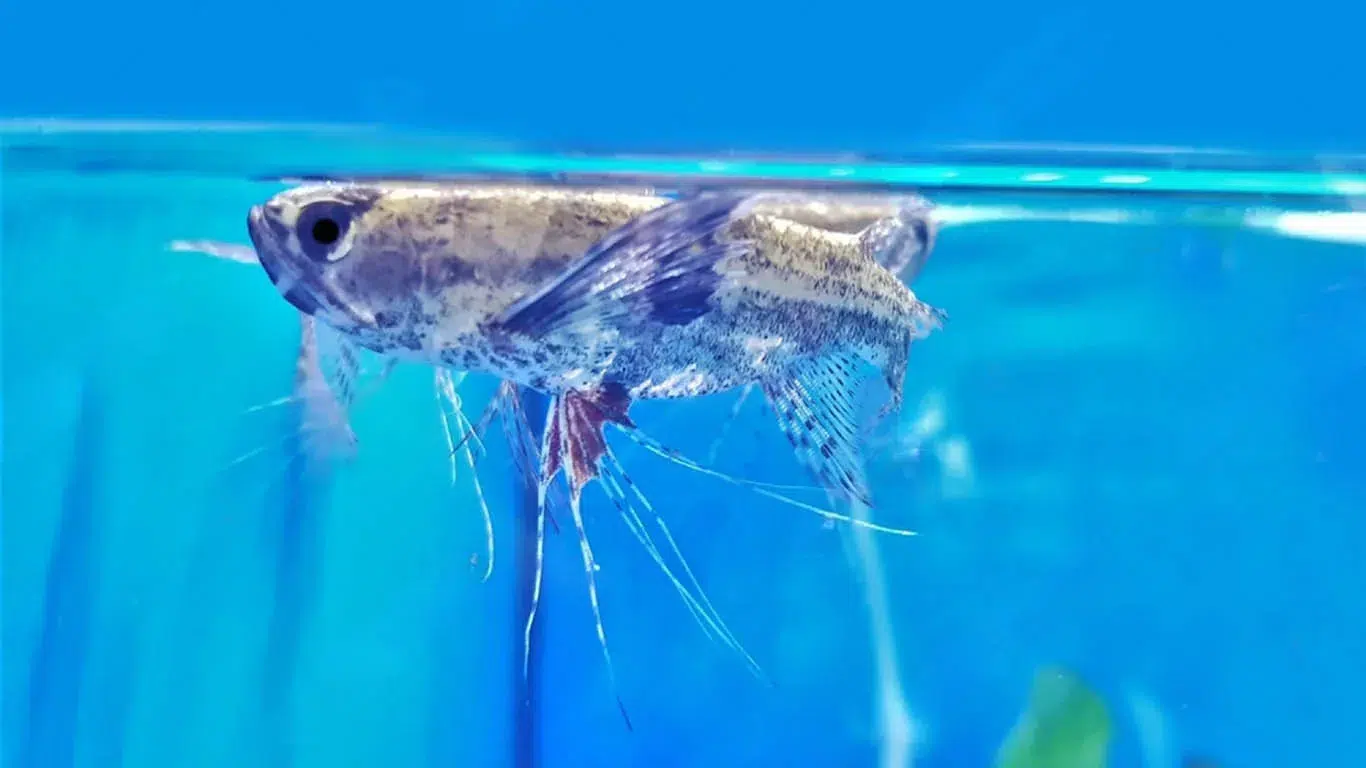
Observing Nurturing Behaviors
While not commonly witnessed in captivity, African Butterfly Fish can sometimes exhibit nurturing behaviors towards their fry. They may protect and care for their offspring until they are capable of independent survival.
These unique behaviors make African Butterfly Fish captivating additions to any freshwater aquarium. By understanding and accommodating their behavior and temperament, you can ensure a harmonious and thriving aquatic environment.
Breeding
When it comes to breeding African Butterfly Fish in captivity, it can be quite challenging. However, with the right techniques and conditions, you can increase your chances of successful breeding. Here are some tips to help you in the process:
- Lower the water level: To encourage spawning, it is recommended to lower the water level in the tank. This simulates the natural habitat of these fish during the rainy season, triggering their breeding instincts.
- Provide live foods: Offering a variety of live foods, such as small insects and invertebrates, can enhance the likelihood of spawning. These natural food sources provide the necessary nutrients and encourage the fish to reproduce.
- Reduce water temperature: Lowering the water temperature by a few degrees can stimulate the breeding behavior of African Butterfly Fish. However, ensure that the temperature remains within the acceptable range for their overall health and well-being.
During the breeding process, the female African Butterfly Fish will release eggs that float to the surface of the water. The male fish will then fertilize these eggs. It is important to carefully remove the eggs from the tank to prevent the parents from eating them, as they may consider them a food source.
After the eggs are removed, they will hatch within a week, and you will have fry to care for. The newly hatched fry are quite small and delicate, so it’s crucial to provide them with appropriate food. Feeding them brine shrimp and daphnia will give them the nutrition they need to grow and thrive.
Breeding African Butterfly Fish requires patience and careful attention to their needs. By creating the right environment and providing the necessary care, you can enjoy the joy of witnessing these unique fish reproduce in your freshwater aquarium.
Join the Pet Planet Diaries
Sign up for our newsletter to get the latest tips, stories, and exclusive insights into the wonderful world of pets.
Final Remarks
In brief, caring for African Butterfly Fish in a freshwater aquarium requires specific attention to detail. By providing them with the appropriate tank conditions, such as a 40-gallon tank with floating plants and a calm water environment, you can create a suitable habitat for these captivating creatures.
It’s important to maintain stable water parameters, including a temperature range of 75°F to 86°F and a pH level of 6.5 to 7, to ensure their well-being. Additionally, feeding them a diet consisting of meaty live foods, such as crickets and feeder fish, will fulfill their nutritional needs and mimic their natural feeding behavior.
While caring for African Butterfly Fish may have its challenges, their unique appearance and behavior make them a rewarding addition to any freshwater aquarium. They are sedentary beings that spend most of their time near the surface, gliding through the water with their large pectoral fins. Their territorial nature may require careful consideration when selecting tankmates.
Remember to regularly monitor their habitat and health to provide them with a long and healthy life. With the right care and attention, these mesmerizing freshwater fish will bring beauty and intrigue to your aquarium for years to come.
FAQ
What is the average lifespan of an African Butterfly Fish?
The average lifespan of an African Butterfly Fish is around 5-6 years, but with proper care and a good diet, they can exceed this lifespan.
What are the specific habitat requirements for African Butterfly Fish?
African Butterfly Fish thrive in a minimum tank size of 40 gallons with a long tank design. They prefer stable water parameters, such as a temperature range of 75°F to 86°F and a pH level of 6.5 to 7. Providing floating plants as cover and maintaining a calm water environment are also important.
Can African Butterfly Fish coexist with other fish?
African Butterfly Fish are generally good community fish but may nip at the fins of other surface-swimming species. It is best to keep them with fish that primarily inhabit the middle and bottom regions of the tank.
What should I feed my African Butterfly Fish?
African Butterfly Fish are natural predators and require a diet of meaty live foods. They do not thrive on flakes or pellets. Feeder fish, crickets, and other insects are recommended to provide them with their nutritional needs.
How do African Butterfly Fish behave in an aquarium?
African Butterfly Fish are primarily sedentary and spend most of their time near the surface of the water. They are known for their unique hunting strategy of floating near the surface without much movement. They can be territorial and exhibit aggressive behavior towards other fish that invade their space.
What are the breeding requirements for African Butterfly Fish?
Lowering the water level, providing live foods, and reducing water temperature can encourage African Butterfly Fish to spawn. The female will release eggs that float to the surface, and the male will fertilize them. It is important to remove the eggs from the tank to prevent the parents from eating them. The eggs will hatch within a week, and the fry should be fed brine shrimp and daphnia.

